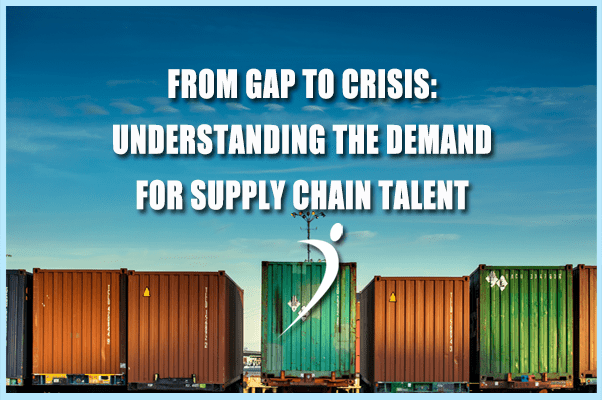
When you order something on Amazon, how does it get from the warehouse to your doorstep? It’s not a question most people think about, but the answer is: the supply chain industry. Supply chain responsibilities encompass a range of functions, from procurement to logistics to transportation. They all work together to make sure Prime customers get their packages in just two days and that every other order arrives on time, every time.
If Amazon – and, of course, every other retailer – relies on the supply chain industry to serve customers, then that means there are a massive amount of jobs that need to be filled to keep the gears turning. As far back as 2014, Fortune magazine reported a need for 1.4 million jobs to be filled in the supply chain industry by 2018. We’ve moved past that time frame, and the demand isn’t slowing down. It is, however, changing.
As we discussed in our first installment of this series, changing job requirements, technology advancements, and negative perceptions among young workers have all contributed to a growing talent gap. In this post, let’s take a look at where the greatest needs are and how supply chain recruitment services can play an important role in the process.
What Kinds of Jobs Are Needed in the Supply Chain Industry?
To many young workers, the term “supply chain” conjures mental images of driving a forklift in a dusty warehouse with no opportunity for career growth or advancement. But in reality, the supply chain industry is full of dynamic, cutting-edge positions ranging from innovative tech jobs to executive leadership.
In its broadest sense, the supply chain includes many different sectors, including:
- Supply Chain Management
- Logistics
- Strategic Sourcing and Procurement
- Planning
- Manufacturing
- Continuous Improvement
- Quality Assurance
Within those sectors, companies urgently need to fill technology positions with people who can analyze data, manage AI components, write code, develop and monitor cybersecurity, and build applications. They need executives with strategic vision and leadership. And they need managers, directors, buyers, drivers, engineers, and planners to perform supply chain functions across a wide variety of industries, from industrial to consumer goods to healthcare.
The problem is that there just aren’t enough qualified people to meet the need.
What Job Types Are In Highest Demand?
Last year, the Material Handing Industry (MHI) reported an urgent need for workers who have both technology skills and business skills. These “purple people” (as MHI calls them) aren’t easy to find, but they will be essential for companies who are riding the wave of robotics, data analysis, and tech integration that is transforming the industry.
Employers also need executives, managers, marketers, HR practitioners, and logisticians. The Bureau of Labor Statistics projects that employment for logisticians alone will grow 7% by 2026, an increase of more than 10,000 jobs. And that’s just the tip of the proverbial iceberg.
The bigger problem is that not many young workers are seeking supply chain jobs, and there are very few new graduates in related fields. That translates into high demand for talent and many unfilled positions across the spectrum of jobs in the supply chain industry.
Here’s a quick snapshot of just three:

As you can see from these three roles, the talent supply problem is multifaceted. High demand for talent, steady streams of retirees, and few young workers stepping up to take their place have led to a burgeoning talent crisis.
What’s the Solution?
With so many jobs to fill and so few qualified workers available, how do you find the necessary talent to fill your supply chain positions?


